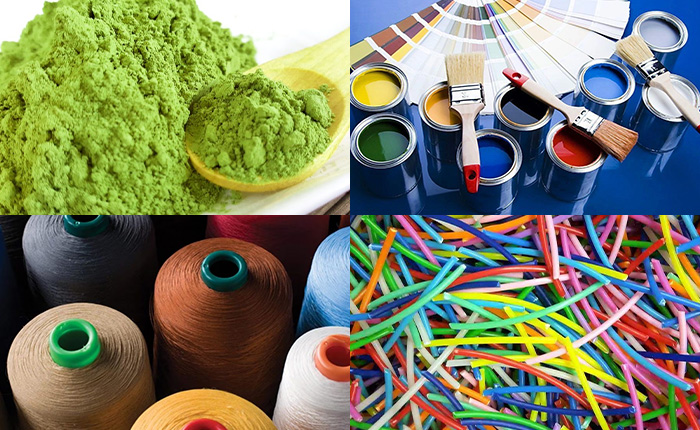Exploring the Rich History and Varieties of Indigo Dyes in Textile Artistry
The Timeless Allure of Indigo Dyes
Indigo dyeing, one of the oldest textile coloring methods known to humanity, continues to captivate artisans, designers, and eco-conscious consumers alike. With a vibrant blue hue that has adorned fabrics for centuries, indigo dyes hold a special place not only in fashion but also in cultural heritage across the globe.
Origins and Cultural Significance
The use of indigo dates back over 6,000 years, with origins traced to regions like India, China, and Africa. Historically, indigo was a coveted commodity, often referred to as blue gold. In many cultures, it symbolized wealth, success, and spirituality. For example, in ancient Egypt, indigo was used to dye textiles that graced sarcophagi, believed to bring protection in the afterlife. Many African cultures have also effectively harnessed plant-based indigo to craft intricate patterns and textiles that tell stories of lineage, tradition, and community.
The Process of Indigo Dyeing
The process of creating indigo dye is complex yet fascinating. Traditionally, indigo is extracted from the leaves of the Indigofera plant. The leaves are harvested, fermented, and processed to extract the dye, which appears as a yellow-green liquid. This liquid is then oxidized, resulting in the rich blue pigment we know today. Notably, indigo does not adhere to fibers in the same way other dyes do; instead, the dye merely coats the fabric's surface, creating the deep shades characteristic of indigo-dyed textiles.
Dyeing with indigo can be a mesmerizing experience. The fabric is often dipped multiple times into the dye bath to achieve deeper hues; the color continually evolves with each dip, ranging from turquoise to dark navy, depending on the number of immersions and the duration of exposure to air.
Modern Applications and Sustainability
indigo dyes product

In today's fast-paced fashion industry, the resurgence of indigo dyes is accompanied by a more significant focus on sustainability. Unlike synthetic dyes, which can have harmful environmental impacts, natural indigo is biodegradable and less toxic. This eco-friendliness has led to a growing trend in the use of natural dyes among conscious consumers who wish to lessen their environmental footprint while still enjoying beautiful textiles.
Artisan brands and eco-fashion labels are significantly re-embracing indigo dyeing techniques, often using traditional methods passed down through generations. This revival not only helps preserve cultural heritage but also supports local economies and craftspeople. Additionally, many indigo products are now made using organic cotton and other sustainable materials, ensuring that the entire supply chain is eco-conscious.
Fashion and Style
The versatility of indigo dye has made it a favorite among designers. From high fashion runways to casual streetwear, indigo shades evoke a sense of timelessness and authenticity. Denim, often dyed with indigo, has become a staple in wardrobes around the world. The popularity of indigo can be seen in various textile forms—be it traditional quilts, bohemian dresses, or sophisticated home décor.
Moreover, the unique patterns that emerge from indigo dyeing techniques, such as shibori (a Japanese tie-dye method) and batik, lend an artistic and personal touch to each piece. No two items are precisely alike, which adds to their charm and appeal.
Conclusion
Indigo dyes embody a rich tapestry of history, culture, and artistry. As we navigate a world increasingly focused on sustainability and ethical practices, the revival of natural dyes like indigo presents a beautiful confluence of tradition and modernity. Whether it's a hand-stitched indigo textile or a contemporary piece of clothing, these products continue to celebrate the timeless allure of this stunning blue dye, connecting us all to our shared human history. Embracing indigo is not just about appreciating its beauty; it's also about acknowledging its place in the broader narrative of culture, creativity, and environmental responsibility.
-
The Timeless Art of Denim Indigo Dye
NewsJul.01,2025
-
The Rise of Sulfur Dyed Denim
NewsJul.01,2025
-
The Rich Revival of the Best Indigo Dye
NewsJul.01,2025
-
The Enduring Strength of Sulphur Black
NewsJul.01,2025
-
The Ancient Art of Chinese Indigo Dye
NewsJul.01,2025
-
Industry Power of Indigo
NewsJul.01,2025
-
Black Sulfur is Leading the Next Wave
NewsJul.01,2025

Sulphur Black
1.Name: sulphur black; Sulfur Black; Sulphur Black 1;
2.Structure formula:
3.Molecule formula: C6H4N2O5
4.CAS No.: 1326-82-5
5.HS code: 32041911
6.Product specification:Appearance:black phosphorus flakes; black liquid

Bromo Indigo; Vat Bromo-Indigo; C.I.Vat Blue 5
1.Name: Bromo indigo; Vat bromo-indigo; C.I.Vat blue 5;
2.Structure formula:
3.Molecule formula: C16H6Br4N2O2
4.CAS No.: 2475-31-2
5.HS code: 3204151000 6.Major usage and instruction: Be mainly used to dye cotton fabrics.

Indigo Blue Vat Blue
1.Name: indigo blue,vat blue 1,
2.Structure formula:
3.Molecule formula: C16H10N2O2
4.. CAS No.: 482-89-3
5.Molecule weight: 262.62
6.HS code: 3204151000
7.Major usage and instruction: Be mainly used to dye cotton fabrics.

